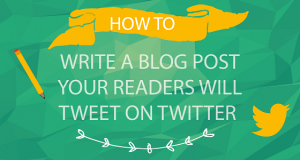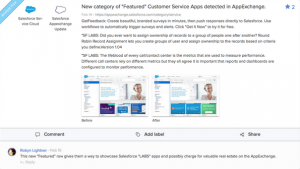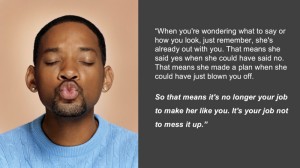Once you’ve been knighted by the Queen of England, your words tend to carry a bit more weight. So discovered Sir Martin Sorrell, CEO and founder of advertising giant WPP Holdings, who recently spoke publicly about how far Facebook still has to go in terms of defining and delivering video viewability for its advertising partners. Specifically, Sorrel decried the fact that Facebook’s video ad offering uses a “three second rule” to determine when a user has intent to watch a video. The rule is especially “ludicrous” when considering that fifty percent of online video advertisements aren’t played with the volume on. In other words, Facebook is charging brands for a viewed ad even when users aren’t actually seeing the ads with any kind of meaningful attention or engagement.
Well, Sir Martin, it appears Facebook was listening.
Days after the keynote speech was publicized, Facebook rolled out a new ad buying option that will allow brands to pay for a spot only if it has been played 100% “in-view.” This means that the entire window is visible on the user’s screen and that the ad plays for its full duration. Previously, advertisers had the option of paying a lower price for ads if they merely played (for any duration) and also the option of paying for ads that were watched for ten seconds or more. These options helped add some flexibility to the aforementioned “three second rule,” but clearly people like Sorrell were far from satisfied – and it’s understandable. Digital marketing is an industry defined by its ability to measure and track return on investment (ROI): Facebook’s way of defining and selling its ad products was making that job harder and harder for all of the brands using its platform to advertise.

Viewability has always been a difficult concept to pin down. But one thing that most experts seem to agree on is that engagement is the key to turning ads into revenue. As the landscape of the internet continues to redefine itself on a daily basis, how we engage with the content therein will continue to evolve as well. With television advertising, the commercial serves as a means to an end for the viewer: watching this will get me across a metaphorical bridge back to the show I want to watch. The internet doesn’t work that way. Advertisers have to demonstrate value and intrigue in an extremely short period of time in order to make a viewer continue watching. Also, with ad-blocking software becoming a major facet of iOS9 functionality, advertisers aren’t even sure if their ads will make it to the playing field, let alone win the viewer over.
The new option, while more expensive, will give brands the flexibility to cater their advertising efforts to their specific strategic framework. Some brands are skilled at creating remarkable, attention-grabbing content that works well within a three second rule context – but others aren’t. As Facebook said in the press release that announced the new rollout: “While it remains our belief that value is created for an advertiser as soon as an ad is in view, we also believe in offering advertisers control and flexibility over how they run their ads.”
Facebook also wants to answer questions of transparency.
For years now, advertisers’ complaints about Facebook’s ad products have been twofold: not only are the prices based on unrealistic viewability measures, but the statistics on ROI are generated in-house at Facebook – a clearly biased source. As we’ve discussed, the landscape of online advertising is relatively new and ever-changing. New developments – such as autoplay ads, pop-up videos, and natively designed ads – are constantly tweaking the way users interact with advertising content when surfing the web.
The company selling that advertising real estate shouldn’t be setting prices based on the data that they themselves calculate. Even assuming Facebook would never do anything underhanded, it doesn’t make any sense not to at least have transparency. If Facebook wants advertisers to put actual stock in the ROI that their platform can produce, they should engage in a truly transparent way of calculating those numbers.
In an effort to mollify those concerns, Facebook announced that they will partner with a third party analytics firm Moat, which will take over the task of measuring viewability for video ads first, and then eventually other ad formats as well, including those on the Timeline and Instagram. This is quite the change in stance for Facebook, who has up until this been point been steadfast in its insistence that their data was more than enough for brands to rely on in terms of tracking ROI.
It appears that, more than any drastic change in philosophy, Facebook was forced to sway their ad selling strategy to adapt to the market. It’s a testament to the power of the ever-important bottom line – whether it’s a mom and pop grocery store or the largest social media giant in the world. Too many brands were pulling out the previously large chunks of their marketing budget from the Facebook revenue bank, and the social media giant had no choice but to answer to their demands.
This harkens back to Facebook’s handling of the recent Instant Articles rollout, in which Facebook bent under the demands of publishers by giving them total rights to ad revenue in order to get them publishing natively on Facebook’s platform. It’s interesting to see how a company as huge and influential as Facebook is forced to adapt constantly, just like any company. If the market – in this case, the market of brands potentially willing to spend large amounts of money to advertise on Facebook – demands that a certain product be created or that changes be made to existing products, Facebook will have to continually adjust to make it happen.
What makes this longstanding feature of any free market economy especially interesting for Facebook is that their users and their customers are two different groups with completely different sets of demands and desires. If Facebook allows advertisers to use their platform as a blank advertising canvas, limitless in its capacity for ads, they could very quickly start to alienate their user base. It’s quite the fine line to tread and it will be interesting to see how successful they are at navigating it – especially as new ad formats are thought up and created, and as the scrolling, surfing, and clicking habits of its users continue to change.
Digital & Social Articles on Business 2 Community
(28)







